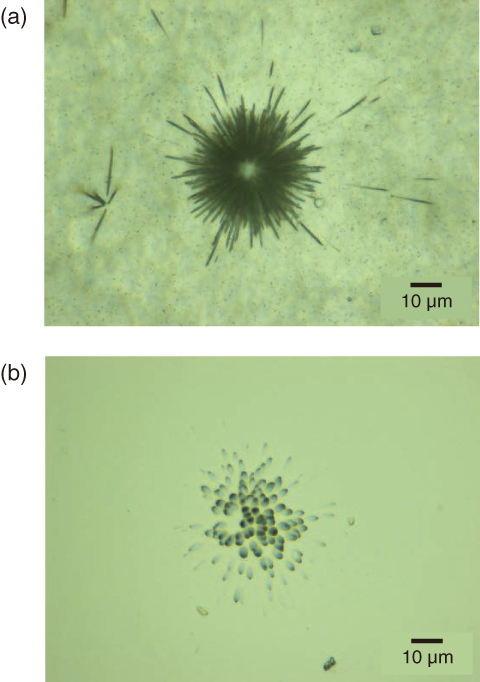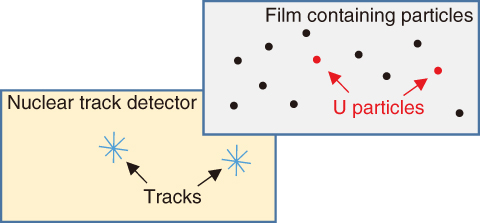
Fig.4-18 Images of (a) fission tracks and (b) alpha tracks from U particles

Fig.4-19 Identification of U particles

Fig.4-20 U isotope abundances in individual particles taken at a nuclear facility and measured with SIMS
Undeclared nuclear activities related to nuclear-weapon production should be monitored to ensure peaceful use of atomic energy. We routinely analyze environmental samples taken at nuclear facilities by inspectors of International Atomic Energy Agency (IAEA). Based on the isotope ratio results, IAEA verifies nuclear materials used and nuclear activities in the facilities.
Secondary ion mass spectrometry (SIMS) is a technique used to analyze isotope ratios. Here, individual particles are irradiated with focused ion beams and sputtered ions of each isotope are detected. To measure individual particles with SIMS, the locations of such particles in the sample should be exactly identified before analysis. In this study, we developed a technique to identify uranium (U) particles by detecting nuclear-tracks. The procedure is as follows. A film containing particles is fabricated and placed in contact with a nuclear-track detector. The sample is then irradiated with thermal neutrons in a nuclear reactor. When U in a particle absorbs neutrons, the U undergoes fission, which creates tracks in the detector. Since the tracks can be observed with an optical microscope (Fig.4-18(a)), U particles can be identified by observing the tracks (Fig.4-19). As another method, alpha tracks created by the alpha decay of U can be used to identify U particles (Fig.4-18(b)). In this case, no neutron source is necessary.
Since the number of tracks relates to the 235U isotope abundance in the particle, we can identify more-enriched U particles by selecting the particles with a larger number of tracks. The identification of U particles abundant in 235U is especially important to detect nuclear activities related to nuclear-weapon production. Fig.4-20 shows a SIMS result for a sample taken from a nuclear facility. Here, we identified particles with a larger number of tracks and analyzed the U isotope abundances with SIMS. Consequently, two particles with higher 235U abundances can be detected, which is impossible to do by SIMS without prior nuclear-track detection.
The present study was sponsored by the Secretariat of the Nuclear Regulation Authority (NRA).